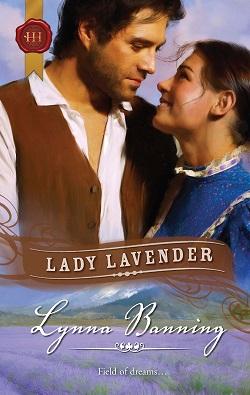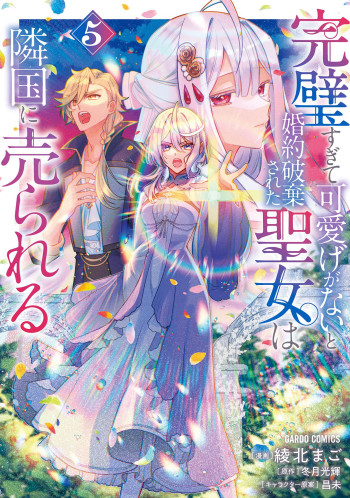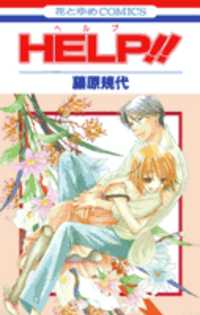Summary

Lady Lavender
by Lynna Banning
WOUNDED SOLDIER, HEALING WIDOW ...
Widow Jeanne Nicolet's beautiful lavender fields are threatened by the advancing railroad. With her livelihood in danger, Jeanne will fight to protect her, and her little daughter's, future.
Constantly on the move, surveying the land, suits Colonel Washington Halliday just fine. He can escape the haunting memories of war that have left his emotions as damaged as his injured body.
Under the sultry heat of the Western sun, the scent of the purple fields is heady, but not as intoxicating as the lavender lady herself ...
.
Read
Lady Lavender on http://kissnovel.net
Martial Peak Reviews
Lady Lavender by Lynna Banning is a poignant tale that intertwines themes of love, loss, and resilience against the backdrop of a rapidly changing American West. The novel introduces us to Jeanne Nicolet, a widow whose life revolves around her beautiful lavender fields, a symbol of her past and a beacon of hope for her and her daughter’s future. As the story unfolds, Banning masterfully explores the emotional landscapes of her characters, particularly through the lens of grief and healing.
Jeanne is a compelling protagonist, embodying the strength and vulnerability of a woman who has faced the harsh realities of life. Her lavender fields are not just a source of income; they represent her connection to her late husband and the dreams they shared. The impending threat of the railroad encroaching on her land serves as a metaphor for the relentless march of progress that often disregards personal histories and emotional ties. Jeanne’s determination to protect her livelihood is a testament to her resilience, and readers will find themselves rooting for her as she navigates the challenges ahead.
Colonel Washington Halliday, the male lead, is equally complex. A soldier scarred by the traumas of war, he embodies the struggle of many veterans who grapple with their past while seeking a path to redemption. His character arc is particularly well-crafted; he is not merely a love interest but a man on a journey of self-discovery. The chemistry between Jeanne and Washington is palpable, and their relationship evolves from mutual understanding to a deep emotional connection. Banning skillfully portrays their interactions, allowing readers to witness the gradual healing that occurs when two wounded souls find solace in each other.
The setting of the novel plays a crucial role in enhancing the narrative. The lavender fields, with their intoxicating scent and vibrant colors, serve as a backdrop that contrasts with the emotional turmoil of the characters. Banning’s vivid descriptions transport readers to the sun-drenched landscapes of the West, making the lavender fields almost a character in their own right. This rich imagery not only adds depth to the story but also reinforces the themes of beauty and fragility in life.
One of the most striking aspects of Lady Lavender is its exploration of the theme of healing. Both Jeanne and Washington are in need of emotional restoration, and their journey together highlights the importance of vulnerability and connection. Banning does not shy away from depicting the rawness of their experiences; instead, she embraces it, allowing readers to engage with the characters on a deeper level. The novel suggests that healing is not a linear process but rather a series of steps forward and backward, a sentiment that resonates with anyone who has faced personal struggles.
Moreover, the book delves into the societal changes of the time, particularly the impact of industrialization on rural communities. Jeanne’s fight to save her lavender fields symbolizes a broader resistance to change, a theme that is still relevant today. Banning invites readers to reflect on the balance between progress and preservation, a conversation that is increasingly pertinent in our modern world. The tension between the encroaching railroad and Jeanne’s steadfastness serves as a microcosm of the larger conflicts faced by many during this transformative period in American history.
In comparison to other works in the genre, Lady Lavender stands out for its rich character development and emotional depth. While many historical romances focus primarily on the romantic aspect, Banning ensures that the characters’ personal growth is equally prioritized. Readers who enjoyed novels like The Lavender Garden by Lucinda Riley or The Nightingale by Kristin Hannah will find much to appreciate in Banning’s nuanced storytelling. Both authors share a talent for weaving historical context with personal narratives, but Banning’s focus on the healing journey sets her work apart.
Overall, Lady Lavender is a beautifully written novel that captures the essence of human resilience in the face of adversity. Lynna Banning’s ability to create relatable characters and a vivid setting makes this book a compelling read. The themes of love, loss, and the fight for one’s dreams resonate deeply, inviting readers to reflect on their own journeys. As Jeanne and Washington navigate their paths toward healing, readers are reminded of the power of connection and the importance of holding onto what truly matters.
In conclusion, Lady Lavender is not just a romance; it is a celebration of life’s complexities and the beauty that can emerge from pain. Banning’s storytelling is both engaging and thought-provoking, making this novel a must-read for anyone seeking a heartfelt exploration of love and resilience in the face of change.
























Reviews 0
Post a Reviews: